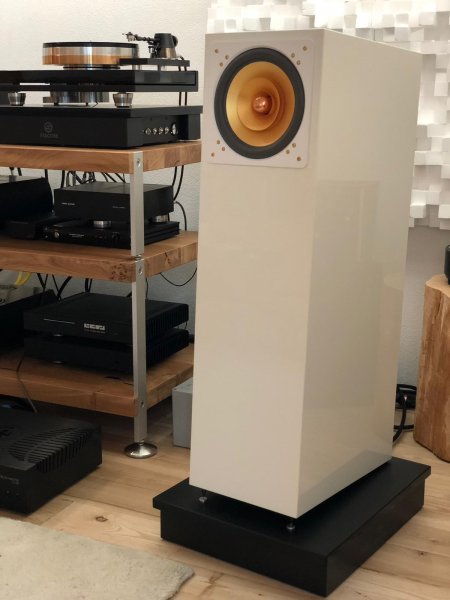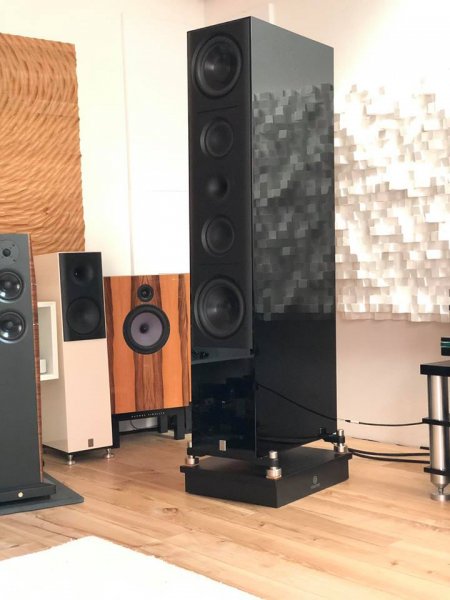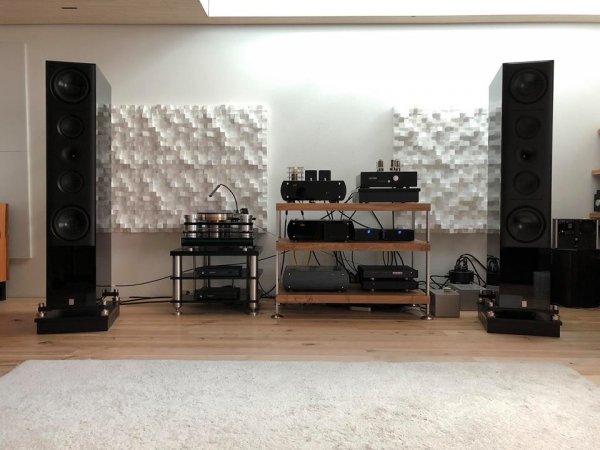Not sure if that's the right thread but could not find a better one.
One more empirical data point for something I've been strongly advocating [after my mentor Barry Diament] - suspending speakers. This one is by our distributor (KlangLoft) and I haven't heard the system myself
yet so pls treat it accordingly.
As Michael reports, suspending his speakers had quite a profound effect in his system and in his circumstances of a suspended wooden floor. The most important effect was reportedly cleaning of a bass bloat, which in turn resulted in revealing new layers of musical information. Buried previously under an over exposed LF. As far as I understand, this LF bloat was a result of the suspended wooden floor happily storing and releasing back the LF energy. Most probably releasing back both to the speaker cabinets as well as to the rest of the system (building structures can transmit vibrations to a surprisingly large distances). Breaking the speaker/floor vibration path resulted here in breaking various feedback loops (feedback to the cabinets, feedback to the amplifiers, feedback to the source), with reportedly good sonic consequences.
An interesting question is how universal are such findings. An immediate counterexample would be those speakers, which are intentionally designed to couple to the floor and their LF output relies on that. OTOH designing such speakers, it is hard to predict and take into account the behavior with all types of floors (suspended, concrete, wood panels, parquet, tiles, etc). I guess as usually the ultimate proof is in the pudding.
View attachment 48785
Cheers,





